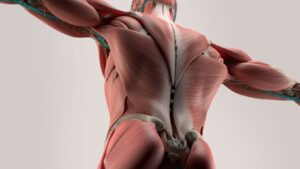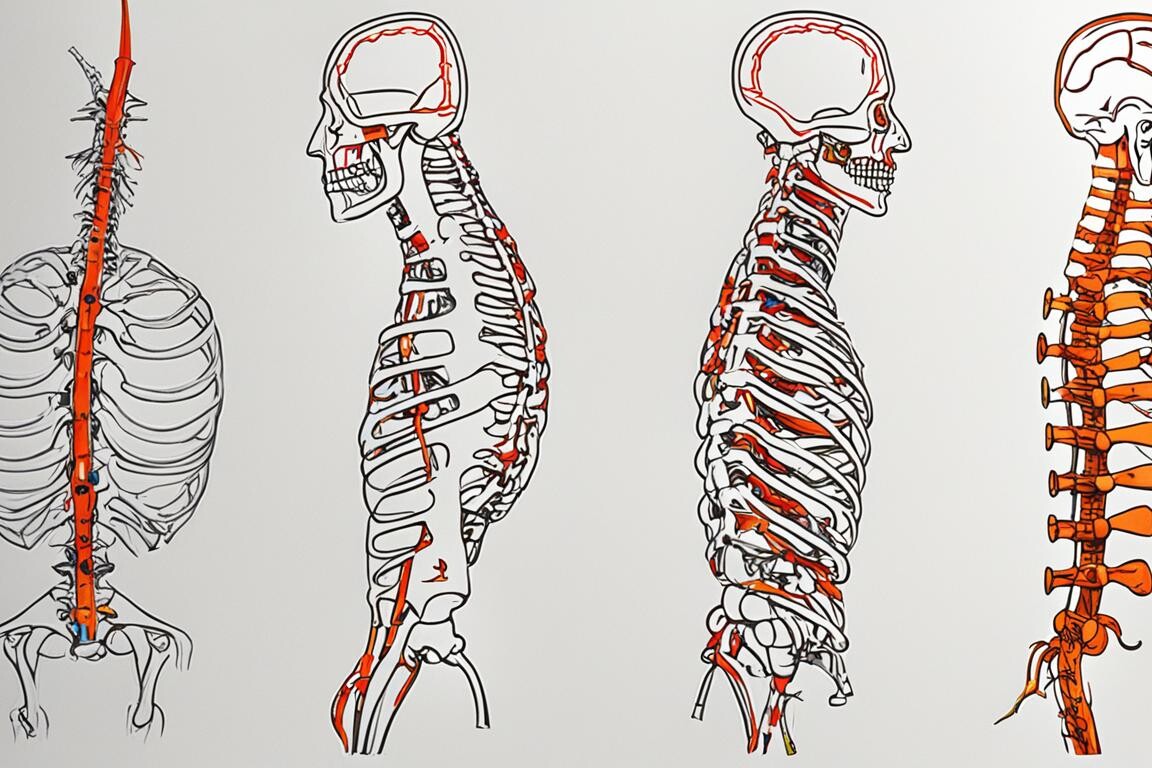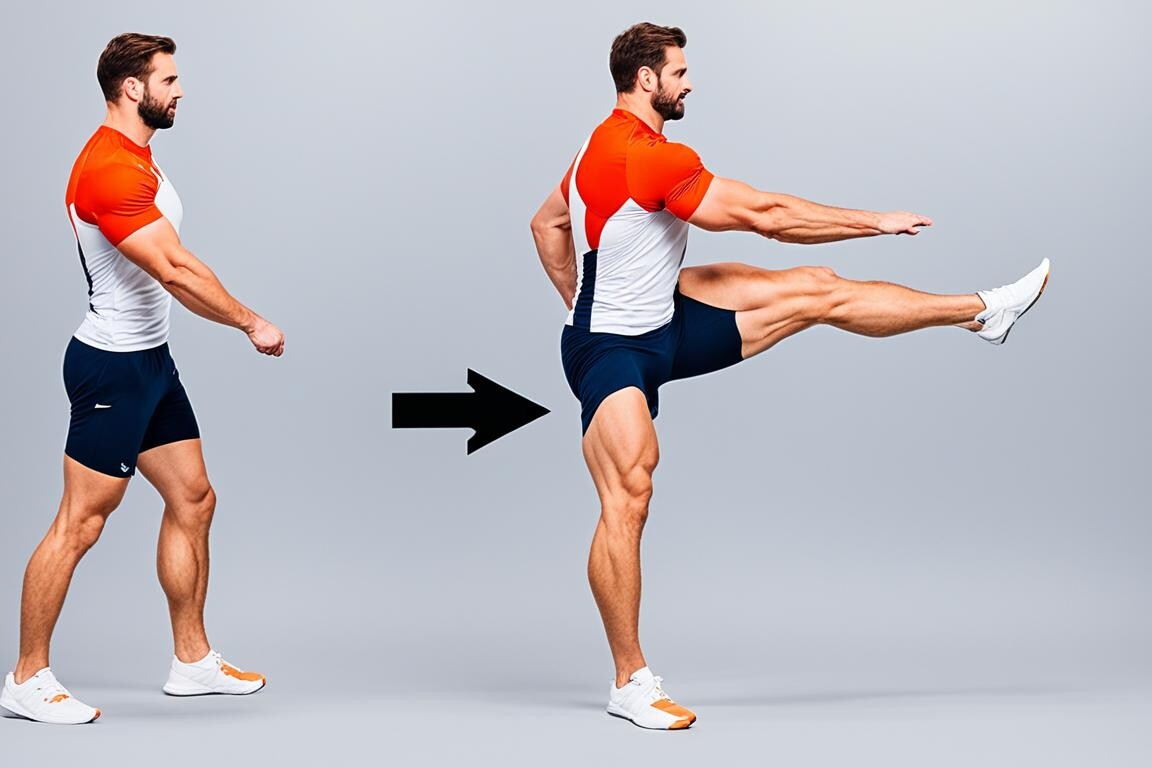Welcome to our simple and informative article on navigating the recovery path of Brown-Sequard syndrome. This neurological syndrome, resulting from hemisection of the spinal cord, can present significant challenges for individuals seeking to regain function and improve their quality of life.
Recovery from Brown-Sequard syndrome can vary depending on the cause and extent of the spinal cord injury. Understanding the mechanism of injury, diagnostic criteria, treatment protocols, and the role of rehabilitation is crucial in maximizing recovery and achieving positive outcomes.
Key Takeaways:
- Brown-Sequard syndrome is a neurologic syndrome resulting from hemisection of the spinal cord.
- Recovery from Brown-Sequard syndrome varies depending on the cause and extent of the spinal cord injury.
- Understanding the mechanism of injury, diagnostic criteria, treatment protocols, and the role of rehabilitation is essential in maximizing recovery.
- Individuals with Brown-Sequard syndrome can experience significant motor function improvement and overall recovery.
- Comprehensive care at specialized spinal cord rehabilitation centers is crucial for overcoming challenges and striving for a better future.
Table of Contents
ToggleUnderstanding Brown-Sequard Syndrome: Causes and Epidemiology
Brown-Sequard syndrome is a rare form of incomplete spinal cord injury that can have traumatic or non-traumatic causes. Traumatic injuries, such as gunshot wounds, stabbings, motor vehicle accidents, and falls, are the most common culprits behind this syndrome. On the other hand, non-traumatic causes include vertebral disc herniation, cysts, cervical spondylosis, tumors, multiple sclerosis, and infectious diseases like tuberculosis and meningitis.

This syndrome is relatively uncommon, accounting for approximately 4% of all spinal cord injuries. It tends to occur more frequently in the cervical or thoracic region of the spinal cord.
In summary, Brown-Sequard syndrome can be caused by various factors, both traumatic and non-traumatic. Understanding the underlying causes is crucial in diagnosing and treating this condition effectively.
Mechanism and Pathophysiology of Brown-Sequard Syndrome
In Brown-Sequard syndrome, the mechanism of injury involves a hemisection or partial hemisection of the spinal cord. This results in specific neurological deficits that can vary depending on the level and side of the lesion.
On the ipsilateral side, there is a loss of sensation for fine touch, vibration, two-point discrimination, and conscious proprioception. This means that individuals with Brown-Sequard syndrome may have difficulty feeling objects, perceiving vibrations, or distinguishing between two points of contact.
On the contralateral side, there is a loss of pain, temperature, and crude touch sensation. This means that individuals may not be able to perceive pain or temperature changes on the side opposite the lesion, and may have challenges with recognizing rough or light touch.
Motor deficits include flaccid paralysis and muscle atrophy on the side of the lesion. This means that individuals may experience weakness or inability to move certain muscles on the affected side. Additionally, upper motor neuron signs may be present below the level of the lesion, indicating disruption in the communication pathways between the brain and spinal cord.
Other symptoms, such as Horner’s syndrome, can also occur depending on the level of the lesion.
To better understand the neurological deficits associated with Brown-Sequard syndrome, refer to the table below:
| Sensory Deficits | Motor Deficits | Other Symptoms |
|---|---|---|
| Ipsilateral (SAME SIDE) loss of: | Flaccid paralysis and muscle atrophy on the side of the lesion | Horner’s syndrome (depending on the level of the lesion) |
| – Fine touch sensation | Upper motor neuron signs below the level of the lesion | |
| – Vibration sensation | ||
| – Two-point discrimination | ||
| – Conscious proprioception | ||
| Contralateral ( opp, to the lesion) loss of: | ||
| – Pain sensation | ||
| – Temperature sensation | ||
| – Crude touch sensation |
Understanding the mechanism and pathophysiology of Brown-Sequard syndrome is essential for healthcare professionals in diagnosing and treating the condition effectively. By identifying the specific deficits associated with this syndrome, appropriate interventions and management strategies can be implemented to improve the quality of life for individuals affected by this condition.
Diagnosis and Treatment of Brown-Sequard Syndrome
The diagnosis of Brown-Sequard syndrome involves a comprehensive evaluation that includes a detailed clinical history, a thorough physical examination, and the use of imaging studies and laboratory investigations. These diagnostic approaches aim to confirm the presence of the syndrome and exclude other potential causes of similar symptoms.
Imaging studies, such as magnetic resonance imaging (MRI) or X-ray, are crucial in visualizing the spinal cord and identifying any abnormalities or lesions that may be responsible for the syndrome. MRI provides detailed images of the spinal cord, allowing healthcare professionals to assess the extent and location of the spinal cord injury.
In some cases, laboratory investigations may be necessary to rule out infectious causes that can mimic the symptoms of Brown-Sequard syndrome. These tests can include blood tests, cerebrospinal fluid analysis, or other specific assays depending on the suspected underlying cause.
The treatment of Brown-Sequard syndrome primarily focuses on addressing the underlying cause and preventing complications. If the syndrome is due to traumatic injuries or cord compression from tumors or abscesses, decompression surgery may be considered to relieve pressure on the spinal cord. This surgical intervention aims to restore and preserve neurological function.
Nonoperative management options are also available for individuals with Brown-Sequard syndrome. Supportive care, including pain management and physical rest, is important for optimizing comfort and overall well-being. Physical therapy plays a crucial role in the rehabilitation process by improving muscle strength, promoting mobility, and enhancing overall functional abilities.

Prognosis and Recovery from Brown-Sequard Syndrome
The prognosis for individuals with Brown-Sequard syndrome varies depending on the cause and extent of the spinal cord injury. As an incomplete spinal cord injury, there is potential for significant recovery.
More than half of patients with Brown-Sequard syndrome recover well, with the majority experiencing motor function improvements. Recovery is typically slower in the first three to six months and can continue for up to two years.
Rehabilitation plays a crucial role in maximizing recovery and improving overall outcomes for individuals with Brown-Sequard syndrome.
Prognosis of Brown-Sequard Syndrome
The prognosis of Brown-Sequard syndrome is often influenced by the location and severity of the spinal cord lesion. In general, individuals with a more localized and less severe injury have a better prognosis compared to those with extensive and severe injuries. In some cases, complete and near-complete recoveries are possible, while others may experience long-term functional deficits.
The prognosis also depends on the underlying cause of Brown-Sequard syndrome. Traumatic injuries, for example, may have a more favorable prognosis if the damaged tissues can heal properly. On the other hand, non-traumatic causes, such as tumors or infectious diseases, may require additional treatments and have a different prognosis based on their specific characteristics.
Recovery from Brown-Sequard Syndrome
Recovery from Brown-Sequard syndrome can be a gradual process that varies from person to person. The extent and rate of recovery depend on several factors, including the individual’s overall health, age, and support system.
During the recovery process, rehabilitation therapies and interventions are crucial. Physical therapy can help improve strength, coordination, and motor function. Occupational therapy may focus on improving daily activities and independence, while speech therapy can assist with any speech-related difficulties.

In addition to physical and occupational therapies, psychological support and counseling may be beneficial for individuals with Brown-Sequard syndrome. Coping with the challenges of a spinal cord injury and managing emotional well-being can contribute to overall recovery.
It’s important to note that recovery outcomes can vary from person to person, and individualized treatment plans should be developed to address specific needs and goals.
| Prognosis Factors | Recovery Outcomes |
|---|---|
| Severity and location of spinal cord injury | Varies based on the extent of injury; potential for significant recovery |
| Underlying cause of Brown-Sequard syndrome | Prognosis may differ based on the specific cause; complete or near-complete recoveries may be possible in some cases |
| Individual factors (age, overall health, support system) | Can influence the rate and extent of recovery |
Conclusion
Navigating the recovery path after Brown-Sequard syndrome requires a thorough understanding of the causes, diagnosis, and treatment options available. By receiving comprehensive care at specialized spinal cord rehabilitation centers and following the guidance of healthcare professionals, individuals with Brown-Sequard syndrome can maximize their recovery and improve their overall quality of life.
Rehabilitation and supportive care play a vital role in aiding individuals with Brown-Sequard syndrome towards significant motor function improvement and overall recovery. While the prognosis may vary from person to person, there is potential for substantial progress. It is important to remain hopeful and committed to the recovery process.
Through physical therapy, personalized treatment plans, and a multidisciplinary approach, individuals with Brown-Sequard syndrome can overcome the challenges they face and strive towards a better future. With time, patience, and the right support, recovery is possible. It is essential for those affected by Brown-Sequard syndrome to seek professional help and access specialized care to facilitate their journey towards recovery.
FAQ
What is Brown-Sequard syndrome?
Brown-Sequard syndrome is a neurologic syndrome resulting from hemisection of the spinal cord. It manifests with weakness or paralysis and proprioceptive deficits on the side of the body ipsilateral to the lesion and loss of pain and temperature sensation on the contralateral side.
What are the causes of Brown-Sequard syndrome?
Brown-Sequard syndrome can be caused by traumatic and non-traumatic injuries. Traumatic injuries, such as gunshot wounds, stabbings, motor vehicle accidents, and falls, are the most common causes. Non-traumatic causes include vertebral disc herniation, cysts, cervical spondylosis, tumors, multiple sclerosis, and infectious diseases like tuberculosis and meningitis.
How is Brown-Sequard syndrome diagnosed?
The diagnosis of Brown-Sequard syndrome is based on clinical history, physical examination, and imaging studies, such as magnetic resonance imaging (MRI) or X-ray. Laboratory investigations may also be done to rule out infectious causes.
What are the treatment options for Brown-Sequard syndrome?
The treatment for Brown-Sequard syndrome depends on the underlying cause and focuses on preventing complications. In cases of traumatic injuries or cord compression from tumors or abscesses, decompression surgery may be considered. Nonoperative management includes supportive care, physical therapy, and rehabilitation to improve function and quality of life.
What is the prognosis for Brown-Sequard syndrome?
The prognosis for individuals with Brown-Sequard syndrome varies depending on the cause and extent of the spinal cord injury. In general, as an incomplete spinal cord injury, there is potential for significant recovery. More than half of patients with Brown-Sequard syndrome recover well, with the majority experiencing motor function improvements.
Source Links
About The Author

This article is medically reviewed by Dr. Chandril Chugh, Board-Certified Neurologist, providing expert insights and reliable health information.
Dr. Chandril Chugh is a U.S.-trained neurologist with over a decade of experience. Known for his compassionate care, he specializes in treating neurological conditions such as migraines, epilepsy, and Parkinson’s disease. Dr. Chugh is highly regarded for his patient-centered approach and dedication to providing personalized care.
→ Book a consultation to discover which remedies suit your needs best.




